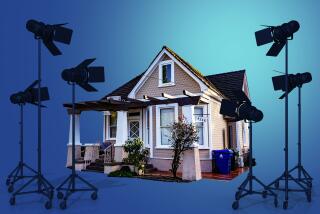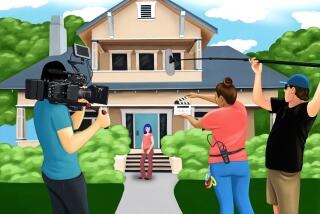Develop Art by Installing Your Own Darkroom
- Share via
A home darkroom, much like photography itself, is limited only by your imagination and ingenuity--and the amount of money, space and plumbing available to you.
The need for a black-and-white darkroom in your home can easily be justified when you realize how difficult it is to get high-quality prints from your local developing shop. OK, that’s stretching it. Let’s just say that there’s a certain satisfaction in finishing the process you start when taking a picture.
Today’s fast-paced lifestyle isn’t conducive to a hobby that requires so much time and effort. People are more used to a world of instant gratification provided by video cameras and color prints from one-hour photo labs. But for photo enthusiasts, black-and-white printing remains an art, with room for personal interpretation of the print.
Your first darkroom doesn’t have to be elaborate. In fact, my first one was temporarily set up in a spare bedroom. I didn’t have running water, just a few trays and an enlarger. All the print washing was done in the bathroom down the hall. If all you need to develop are snapshots of your family and friends, a setup such as this should suit you.
If you prefer a more elaborate arrangement, find an unused bathroom. Build a countertop above the bathtub for trays and a small table over the toilet for the enlarger.
Ventilation is usually the most overlooked item in a home darkroom. You will be working for hours over open trays containing developer and fixer; it’s important that you install an exhaust fan to bring fresh air into the room.
Design your darkroom for future needs: While you may begin by printing 8-by-10-inch prints, you may step up to 11-by-14-inch or 16-by-20-inch prints.
Photographer Mark McGregor of Costa Mesa based his selection of an apartment on its darkroom potential: He selected one with a laundry room that could be converted into a darkroom. He now has a darkroom with running water but has to take his laundry out. For him, it’s a small price to pay.
Landscape photographer Robert Tracy built his darkroom in an extra bedroom on the second floor of his Irvine home 18 years ago. “There are a lot of things you can build yourself, like print washers, sinks, light-tight drawers and cabinets for storage, and save yourself a lot of money,” Tracy said.
Outfitting your darkroom will require these necessities:
Enlarger--No expense should be spared when purchasing an enlarger and lens because they are the most important elements in a darkroom. Select an enlarger that will work with your camera’s format. Read the classified ads or peruse the photo swap meets for used enlargers; they generally last a lifetime if properly cared for.
Darkness--Blacken or cover any windows in the room since you need total darkness for processing black-and-white film. Use plywood cut to size if you have a permanent setup or tape black plastic to the windows if this is a temporary installation. Block out the light from under the door or light from an appliance (such as a telephone). Film can be ruined during the processing stage by the smallest flash of light. Safelights need to be kept far enough away from the paper to prevent light exposure from causing it to fog.
Sink--Install a sink large enough to hold trays while you work. Use the same sink for processing film and making prints. Stainless steel or fiberglass sinks are available in different sizes, or you can build one with a wood frame covered with fiberglass. The most important factors for an easy operation are proper drainage and height.
Containers--Use high-quality storage containers to store your chemicals and keep the containers accurately marked.
Wash--Select a washing method that fits your budget. A tray with a Kodak siphon doesn’t offer the highest capacity, but it’s functional and inexpensive.
Wet and dry--You’ll need two sides to your darkroom: The wet side holds the chemicals, trays and tanks and the dry side has the printing equipment, light table and paper. Mount boards, mounting equipment and a mat cutter are best stored away from the wet area (in another room if possible) to avoid contamination.
Accessories--First priorities would include tanks, reels and a timer which are needed for developing film, and graduates to be used for measuring chemicals. There’s an unlimited amount of darkroom accessories; upgrade yours by adding an easel for paper, a grain focuser, a paper safe, burning and dodging tools and a storage system for negatives and prints.
The Photography Column, which runs every other Saturday in Orange County Life, is intended to help the serious amateur and weekend shooter.



